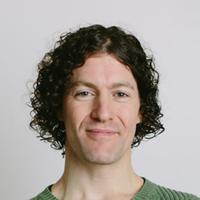The RCMP has been quietly running an operation monitoring individuals’ Facebook, Twitter, Instagram and other social media activity for at least two years, The Tyee has learned.
The existence of Project Wide Awake has never been reported.
And The Tyee investigation revealed that the RCMP has moved from a “reactive” approach — analyzing specific social media accounts as part of a criminal investigation — to a “proactive approach,” which the RCMP said aims to “help detect and prevent a crime before it occurs.”
That involves ongoing wide-scale monitoring of individuals’ social media use and could pose a threat to Canadians’ privacy and charter rights, say experts.
In February 2018 the RCMP began using software provided by Carahsoft, which supplies governments, including intelligence and defence agencies. The contractor is located just west of Washington, D.C. in an area described by the Washington Post as “Top Secret America.”
The developer of the software, Salesforce, boasts of the power of its Social Studio monitoring application on its website.
“Ever wished you could be a fly on the wall in the homes of consumers? That’s kind of what social media monitoring is,” the company claims.
The Tyee learned of the monitoring after obtaining a non-public June 2017 letter from Gilles Michaud, RCMP deputy commissioner of federal policing, to the federal privacy commissioner.
Michaud assured the commissioner then that RCMP monitoring didn’t use “mass surveillance techniques or technologies” or “broad-based internet monitoring” nor “scenario-based targeting.”
The program was strictly “reactive,” as opposed to “proactive or predictive,” Michaud wrote in 2017, suggesting that social media history was then queried only in response to specific investigations.
But that’s no longer true, based on recent RCMP written responses to Tyee questions.
RCMP spokesperson Sgt. Tania Vaughan said since the 2017 letter the force has expanded its program and made a “shift towards a proactive and reactive approach” to “fully embrace the value of open source social media content.”
“The RCMP had used limited social media analysis in ongoing investigations,” Vaughan wrote. “Today, analysis of open source social media content can help proactively identify threats to public safety.”
“Police are learning that social media analysis can help proactively identify crimes in progress (the movements of rioters, for example) or planned criminality. Project Wide Awake has demonstrated to the RCMP the utility of social media analysis to investigate and prevent crime.”
Given a specific example by The Tyee — a demonstration — the RCMP elaborated on the distinction between proactive and reactive approaches.
“A reactive approach would be analyzing social media to solve a crime that occurred at the protest,” it said. “A proactive approach would be to analyze social media to see if there are any indications that predict a crime may occur at the protest and take steps to prevent it from happening, such as increasing police presence.”
The software lets police identify and monitor activity on Facebook, Twitter, Instagram and other social platforms by entering keywords, Vaughan told The Tyee.
The tool does not allow access to private messages and is not a mass surveillance tool, the RCMP insisted.
But Chris Parsons, a researcher at Citizen Lab at the University of Toronto's Munk School, says the operation could well involve mass surveillance of citizens and their public online comments and activities.
“The RCMP is stating that this is not a mass surveillance tool, but it’s not entirely apparent why it wouldn’t be,” he said.
The Tyee asked Vaughan to explain how the RCMP’s monitoring should not be considered surveillance as it claimed to the privacy commissioner.
“Surveillance implies close observation of a group or individual,” Vaughan said.
“The tool analyzes internet content for criminal behaviour and in particular public safety threats. Consider the analogy of a police patrol driving though a neighbourhood.”
The RCMP’s refusal to release its policies on the monitoring and the use of the information, or a privacy assessment it said it conducted prior to implementation, alarms Brenda McPhail, director of the Privacy, Technology & Surveillance Project at the Canadian Civil Liberties Association.
“It is insufficient and unaccountable to say there is a policy governing the practice of social media surveillance without sharing its contents,” she said.
Any policy governing Project Wide Awake should be transparent to ensure that rights are being respected and that nobody is being targeted based on race, ethnic origin, religion or political activity like charter-protected dissent, McPhail added.
Parsons agreed.
“As citizens we have a right to know how exactly and when exactly and under what conditions the state is intruding into our private lives,” he said. “The failure to express that only damages public safety in Canada insofar as it breeds distrust and mistrust in the kind of activities undertaken by the government.”
MacPhail said the RCMP’s argument that it only searches and monitors public posts doesn’t reduce the threats to privacy and individual rights.
“There is both a qualitative and quantitative difference between someone seeing one post in the course of browsing a social media feed, as regular users do, and potentially having the totality of our communications over time collected and analyzed by the state,” she said.
“That difference matters, and we should be having a serious public debate about the degree to which this kind of inherently invasive action is either necessary or proportionate.”
The RCMP maintains that “a search warrant would not be required to use this off-the-shelf tool, which queries and analyses publicly accessible information, where there is no reasonable expectation of privacy, such as public Twitter or Facebook posts.”
But Citizen Lab’s Parsons says the law is not that clear cut.
“There is a position taken that this is public information and does not constitute private information, and that is an inaccurate assessment of the way that Canadian law assess public and private in this country as far as I’m concerned,” he said.
In the U.S. the barriers to the state’s use of that kind information is “incredibly low,” Parsons said. As a result government surveillance of social media is common.
But Canada is different, and just because information is public doesn’t mean the individuals give up any rights to privacy, he says.
“I can have a communication with you publicly on Twitter. We can go back and forth. Even though anyone can watch what we’re doing, for the purposes of the government I still retain a privacy interest in what is going on.”
The government has to be able to demonstrate a specific interest in monitoring that particular communication, he says.
“That doesn’t mean they have to get a warrant,” Parsons says. “But there does have to be an assertion that collecting this semi-public information is an appropriate activity.”
It’s important to know how they are monitoring. Searches based on hashtags, location or keywords could provide a lot of contextual information on individuals, he added.
The RCMP statement says the surveillance software is used for “preventing cascading incidents,” “identifying threats against government officials,” “responding to man-made or natural disasters and humanitarian relief efforts” and “identifying new emerging trends and officer safety issues.”
“Identifying new and emerging trends and officer safety issues — does that mean they’re watching two people and those two people are responsible for all of the trends and all of the officer safety issues in Canada, or is it a much broader lens? I strongly suspect it will be the latter,” Parsons says.
The RCMP said the software lets it analyze a variety of public social media platforms in real time during a major event, which can provide key information that is easy to miss, Vaughan said.
Vaughan gave an example of shootings on Parliament Hill in 2014, where social media users reported a possible second gunman. The reports caused police to attend the area and declare to media the report was false, she said.
In general, the safety issues include threats of bodily harm to police, gang activity, the prevalence of weapons in a community or development of weapons, said Vaughan. ![]()
Read more: Rights + Justice, Politics, Media, Science + Tech

















Tyee Commenting Guidelines
Comments that violate guidelines risk being deleted, and violations may result in a temporary or permanent user ban. Maintain the spirit of good conversation to stay in the discussion.
*Please note The Tyee is not a forum for spreading misinformation about COVID-19, denying its existence or minimizing its risk to public health.
Do:
Do not: